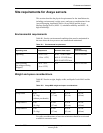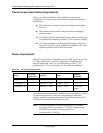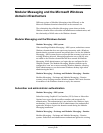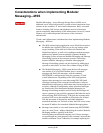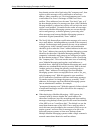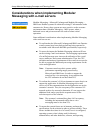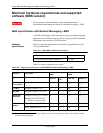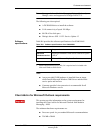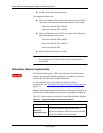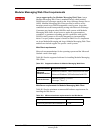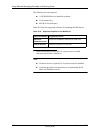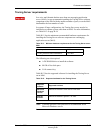
Avaya Modular Messaging Concepts and Planning Guide
B-10 November 2004
Avaya Modular Messaging Concepts and
Planning Guide
Considerations when implementing Modular
Messaging with e-mail servers
Modular Messaging—Microsoft Exchange and Modular Messaging—
IBM Lotus Domino systems fit within the existing IT infrastructure at the
customer site. Hence, these systems are more sensitive to the customer
environment than a Modular Messaging—MSS system, where a
dedicated server and private network are used to isolate critical
operations.
Some additional considerations when implementing Modular Messaging
with e-mail servers are:
! To confirm that the Microsoft Exchange and IBM Lotus Domino
e-mail systems have been deployed and are being operated in
accordance with Microsoft and IBM specifications, respectively.
! To assess the impact the Modular Messaging solution will have
on the existing e-mail environment. The messaging requirements
of a unified message store increase the utilization of the e-mail
server, mailboxes, and system administration. Thus, the CPU
utilization and memory requirements of the e-mail servers need to
be able to support the additional processing requirements for the
voice mail application.
Note: Customers must keep their systems within
performance operating ranges prescribed by
Microsoft and IBM Lotus. In order to support the
extra load for voice messaging, Avaya requires that
the CPU utilization be no more than 50%.
! To evaluate the customer’s LAN environment to ensure that it can
support the application. In Modular Messaging with e-mail
servers, all of the communications for the application run on the
customer’s network. Thus, the occupancy of the customer’s IP
network needs to be assessed to determine if it can support the
additional load, and to provide the responsiveness for the
real-time aspects of the solution.
Note: The customer's estimated busy hour LAN occupancy,
including the incremental traffic due to voice
messaging must be less than 25%.
! To ensure that certain factors are in harmony and meet the
specifications for the solution in order to perform reliably. These
factors include the release level of e-mail, how it is configured,
operating systems, what is being used for directory
authentication, and other hardware, software, and operating




